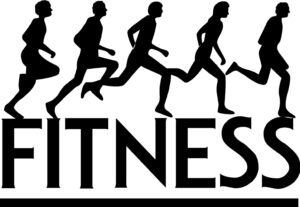Introduction
Straight, No Chaser wants you to get active as we discuss starting a workout regimen.
Steps as you start your workout regimen
First things first: Get cleared by your physician.
You’re not going to run a marathon on your first day back working out.
Strokes and heart attacks are rare during physical activity. The risk that does exist comes from someone who figuratively goes from 0–60. Don’t go from inactive to hyperactive, engaging in vigorous-intensity aerobics (e.g., that includes shoveling snow, running stairs, etc.). It’s a good idea to work with a personal trainer if it’s within your means. You need to have a plan in place to get from zero to hero.
We’ve previously discussed losing weight in the context of the caloric index. Just remember that in order to lose one pound, you need to burn an average of 500 more calories per day than you eat or drink—for an entire week. We’ll get back to the dietary consideration in an upcoming post, but for now let’s focus on the exercise/activity component of the equation.
To translate what “500 more calories per day than you eat or drink” looks like, follow these tips:
- Strive for 150 minutes/week of moderate-intensity aerobic activity (e.g., brisk walking), or
- Achieve 75 minutes/week of that vigorous-intensity aerobic activity, or
- Create an equivalent mix of the two.
Remember, your metabolism often plays a role on whether you need more or less aerobic activity to accomplish your goal.
Now these aerobic recommendations represent a minimal amount likely to help you maintain your current weight. Increase these amounts and/or use the dietary intake side of the equation to help you lose weight. Check back tomorrow for a review of those.
Follow us!
Ask your SMA expert consultant any questions you may have on this topic. Also, take the #72HoursChallenge, and join the community. Additionally, as a thank you, we’re offering you a complimentary 30-day membership at www.72hourslife.com. Just use the code #NoChaser, and yes, it’s ok if you share!
Order your copy of Dr. Sterling’s books There are 72 Hours in a Day: Using Efficiency to Better Enjoy Every Part of Your Life and The 72 Hours in a Day Workbook: The Journey to The 72 Hours Life in 72 Days at Amazon or at www.jeffreysterlingbooks.com. Another free benefit to our readers is introductory pricing with multiple orders and bundles!
Thanks for liking and following Straight, No Chaser! This public service provides a sample of http://www.SterlingMedicalAdvice.com (SMA) and 844-SMA-TALK. Likewise, please share our page with your friends on WordPress! Also like us on Facebook @ SterlingMedicalAdvice.com! Follow us on Twitter at @asksterlingmd.
Copyright © 2019 · Sterling Initiatives, LLC · Powered by WordPress




